The highlight of our year is Fishtival, an annual celebration when we, your Alaskan fishermen are able to share the year’s catch with our community.

During this fun and festive event, we mark the end of the fishing season, welcome home our fishermen, and perhaps most importantly - share our favorite ways to enjoy salmon, especially the unique tastes and traditions of smoked salmon.

Why Smoked Salmon?
At Wild for Salmon our favorite way to enjoy salmon is smoked, and we know we aren’t alone. We feel lucky to have a connection with the culture of Bristol Bay and access to the unique resource of salmon. We have learned about many different ways to enjoy fish in this preserved method from our friends and peers in Southwest Alaska, as well as from Steve’s family history with meat butchery. That being said, smoking salmon and brisket aren’t quite the same. Perfecting recipes, sharing them with our community, and enjoying wild-caught salmon in a few different ways is what our annual Fishtival is all about. We hope you’ll join us this year for our week-long sale in-store and online.
The History of Smoked Salmon
The Dena’ina, Sugpiak, and Yupik peoples of the Bristol Bay watershed have been smoking salmon for many generations. Long before the commercial fishery developed.
Smoking is a method of preserving the fish against spoilage. The fish is cured and partially dehydrated. The benefits of smoked food were first discovered in ancient times when preparing for the long, nomadic winters meant putting up a serious pantry of stored food.
Today smoked salmon is enjoyed across cultures and the world. We owe our enjoyment of this nutritious food to the practices of native Alaskans and other Indigenous groups, who historically relied on salmon as a paramount part of their diet and economy. The salmon preservation of the Pacific Northwest is most often a cold smoke, resulting in a dried, "jerky-style" smoked salmon.
Given that the salmon run returns to the local watersheds for just a short period of time each year - during the summer months for most river systems - this style of deliciously preserving wild-caught salmon has been used for centuries to create a food staple for the north-western American tribes and Canadian First Nations people.
There are numerous ways to preserve and smoke salmon, all of which add a depth of flavor to wild-caught fish. To preserve indefinitely in modern times, the smoked product is typically pressure-cooked before being packaged in a can or a tetra-pack, or frozen.
 Photo by Ben Knight Photo by Ben Knight
|
Our Fishtival Tradition
The Wild for Salmon Fishtival is our annual celebration to welcome the F/V Ava Jane crew home to Pennsylvania from Bristol Bay, Alaska. As our local customers know, Steve’s family ran a butcher shop when he was younger so naturally he started smoking the salmon he brought home during his very first season in Bristol Bay.
Over the years Steve’s ideas on how to smoke fish have been tweaked to perfection by friends and experts alike. But the original intention has always remained the same. Similar to the historic tradition of smoking salmon in Alaska, our purpose for smoking the fish is to share this delicious food with friends and family back home during the winter months.
After the first few years building the business, the Kurians and the Wild for Salmon team put together an annual gathering to meet the fishermen of our crew, and perhaps more importantly, to enjoy the bounty of the salmon together with our community. At the Wild for Salmon Fishtival each August, we prepare fish in a few different ways to educate our customers on the many ways they can enjoy the catch. We also partner with other local food and entertainment vendors to create a day that is fun, engaging and delicious for the whole family.
Salmon are honored wherever they run and wherever they are enjoyed as sustenance across the world. For some tribes, the salmon are honored with a first salmon ceremony, like the Lummi Nation in the Pacific Northwest or the Dena’ina Potlach Ceremony. Fishtival is a special day where we try to bring some of this tradition home to our customers.
Although today we benefit from the technologies of airplanes, refrigeration, and diesel engines when we share the joy of smoked salmon, we are reminded of the communal traditions and important values of those who have relied on salmon for millennia. Especially when we are gathered together enjoying fish from Bristol Bay after the fishing season.
How to Smoke Salmon like an Alaskan Fisherman
As local Alaskan fishermen, we have tried many recipes for smoked salmon, and in the end have learned that there’s nothing that compares to the traditional cold-smoke method. During this style of smoking salmon, the fish temperature isn’t raised much past 80 degrees in most recipes - many refer to this sweet spot in temperature as a “warm summer’s day.” Instead, the fish is cured by salt before smoking then dehydrated by the heat produced by a small fire of alderwood. Alder can be found all over southwest Alaska and gives off a fragrant smoke which adds to the traditional flavor of smoked salmon across the region. You can buy alder chips here to recreate this traditional method at home.
Here’s Steve’s method on how to smoke fish with a backyard smokehouse:
|
Here is another sure-fire way to enjoy smoked salmon from the folks at The Alaska Life; David’s take on smoking salmon is very similar to Steve’s and works well in an electric smoker. If an overnight soak or wet brine won’t work for your set-up, you can also try a dry-brine, which is typically a shorter process.
If you’re a city-dweller or not so into smoking fish at home, you can skip right to this recipes section after you’ve got a good stock of Wild for Salmon smoked salmon in your freezer.
Even our salmon Nova-style lox are cold-smoked after curing, unlike traditional gravlax, which are only cured and not smoked. You can learn more about the traditions behind bagels and lox here and here.
 Steve in Naknek in the early 2000s. Steve in Naknek in the early 2000s.
|
What is Salmon Candy and where did it come from?
Salmon Candy is smoked salmon made with a sweetened brine, usually with dark brown sugar, birch or maple syrup. This method is very popular in the Pacific Northwest and is one of our most favorite traditions we’ve come to share with that part of the world.
Our recipe for Sockeye Salmon Candy is cured to perfection over maple and alder wood; this delicious product from our cured and smoked seafood line is ready-to-eat upon thawing. This salmon candy is also often made from King salmon, a fattier species of salmon. Either way, salmon candy is our most family-friend salmon snack and might just be the first seafood your young kids learn to love.
Keeping our Methods Traditional and Your Fish Wild
Although there are many modern and delicious ways to enjoy wild-caught salmon (air-fryer anyone? Instant-pot anyone?), we love the traditional practice of smoking fish because it is delicious and because staying connected to the traditions of Bristol Bay is important to us.
We are Wildly Devoted to salmon, their clean water, the surrounding environment and communities and respecting the harvest. Sometimes that devotion materializes as a day spent in the yard cutting, brining and slowly tending a fire to smoke a batch of fish to share with our friends and neighbors.
 |
Smoking salmon may seem like a laborious process, but the benefits of your labor will be clear as you connect to the fish and the traditions of its history while learning how to smoke fish at home.
If you follow the steps above, you won’t regret spending a day in close communion with the sockeye salmon of Bristol Bay. We hope you’ll come down and try some at the upcoming Fishtival, where we celebrate this special food and its traditions in our own backyard.

Try out our smoked salmon here!
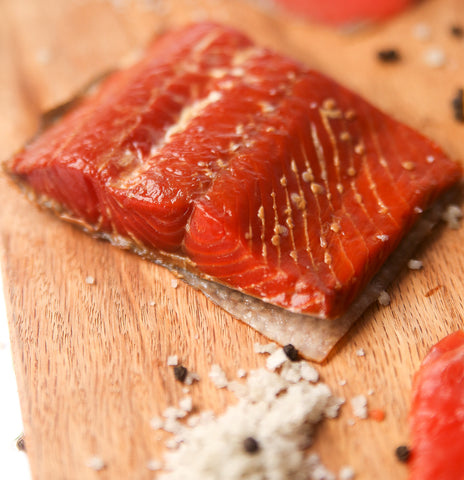



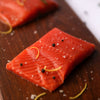 Wild Alaska Salmon
Wild Alaska Salmon Alaska Salmon Burgers
Alaska Salmon Burgers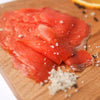 Smoked Salmon & Seafood
Smoked Salmon & Seafood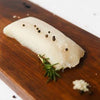 Wild Alaska Whitefish
Wild Alaska Whitefish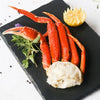 Wild Shellfish & Shrimp
Wild Shellfish & Shrimp Wild Albacore Tuna
Wild Albacore Tuna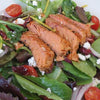 Canned Seafood
Canned Seafood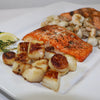 Meal Box & Samplers
Meal Box & Samplers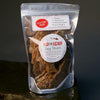 Pet Products
Pet Products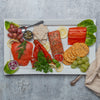 Gifts
Gifts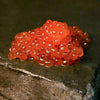 Specialty
Specialty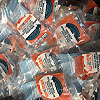 Wholesale Ordering
Wholesale Ordering